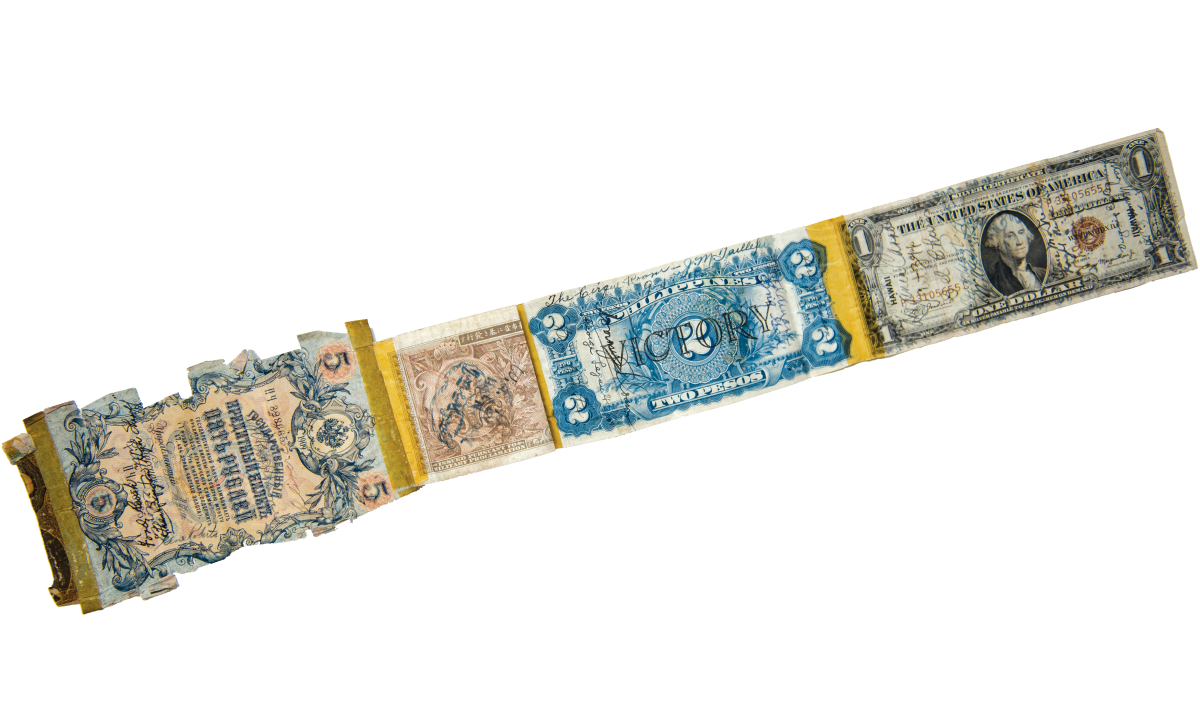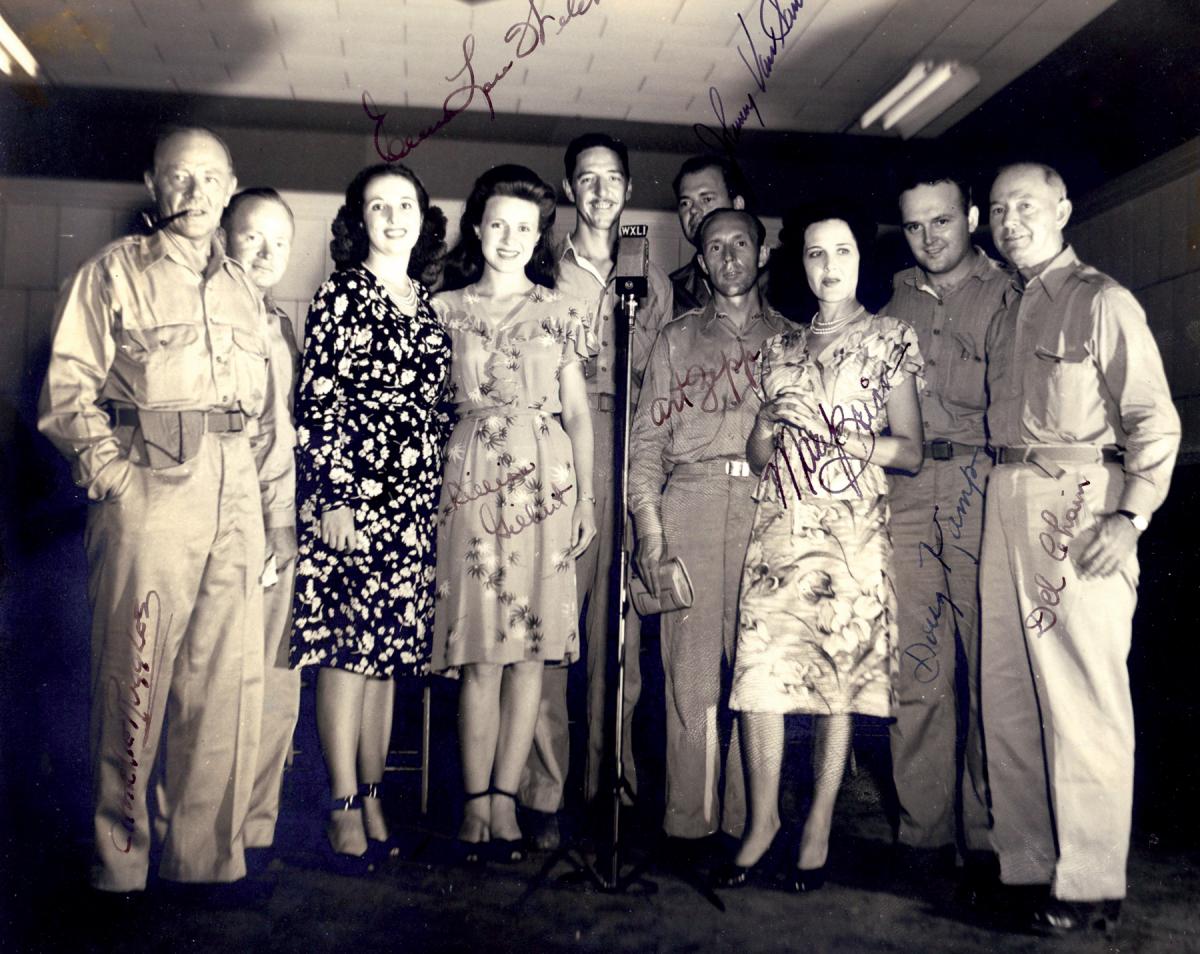“A good luck charm and drinking game all rolled into one.” Thus goes one online description of an unusual American tradition that started with Alaskan stunt pilots in the 1920s then spread like wildfire, “Kilroy Was Here”–style, during World War II. To be in possession of a “short snorter” is to own an offbeat memento of a time long gone. The traveling serviceman would mark his global travels by taping a piece of paper currency from each new country to his ever-growing strip of them. Amid the exigencies of wartime global movement, one’s snorter could become ever less shorter: One legendary example eventually grew to 200 feet in length. More than 400 banknotes comprised it, and when rolled up it made a 15-inch-thick bundle.
That’s all well and good, and a fun enough way to mark your travels, but what distinguishes this from a mere exotic-money collection is the all-important autograph aspect, which sprang from aviator traditions. (“Short snort” = “not a full measure of liquor.” “Short snorter” came to be a nickname for aviators among themselves, an ironic nod to profession-forced moderation.) To mark a significant crossing—an ocean, the equator—the crew of an aircraft each would get out a bill and have all his mates autograph it. Later, somewhere far away, if one of them ever ran into another, he could demand him to produce his autographed buck—if he didn’t have it on him, he had to buy the other guy a drink. (Other rules evolved as well: The shortest snorter had to buy the round, the fewest number of autographs had to pony up, etc. etc.) Everywhere you went, you and your comrades du jour would do the same autograph-exchange bit, and you’d add that new bill to your ever-growing roll. And the way to never get stuck with the bar tab was simple: Always have your short snorter on you, wherever ye may roam.
The more high-falutin’ the autographs, the more fascinating the short snorter. And there are some famous ones: There’s a General George S. Patton short snorter, a General Hoyt Vandenberg short snorter, a Tehran Conference short snorter signed by Franklin D. Roosevelt. Tom Sparks, founder of the Short Snorter Project and probably the world’s leading authority on the subject, has compiled an astounding, prolific array of them sprinkled with names ranging from a young Gerald Ford to “Bull” Halsey.
Clearly, each short snorter tells its own unique story. The example shown here, from the collection of Naval Institute member and donor Carroll Brooks, has a particularly mysterious story behind it (the roll begins with a bill from Tsarist Russia?!) as well as a certain entertainment value—entertainment in the form of a USO troupe, who autographed its dollar bill en route to a Pacific tour in 1945. The performers who signed the snorter, seen in this September 1945 photo taken on Guam, include comedian Charlie Ruggles (far left) and actress Mary Brian (third from right), the show’s headliners.
“Short snorters have become very collectible due to the unfortunate fact that more and more World War II veterans have passed on and their keepsakes are divided amongst their survivors,” said Sparks. “Historically, their value is in the eye of the beholder. To some, they are worthless. To others, they are a treasure.” Treasures they are, and you can learn more about them at the Short Snorter Project: www.shortsnorter.org.
Know of an unusual naval artifact? Contact us at articlesubmissions@usni.org.




